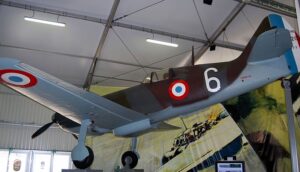Time Period: Pre-WW1, World War I
Country of Origin: France
Type: Biplane, Reconnaissance and Surveillance
Manufacturer: Farman Aviation Works
Farman HF.20 Aircraft Overview
The Farman HF.20 was a French reconnaissance and bomber aircraft developed by the Farman brothers in 1913, just before the outbreak of World War I. The aircraft was used by several air forces during the war and played an important role in the early stages of aerial warfare.
The HF.20 had a wooden frame covered in fabric and was powered by a 100 horsepower water-cooled engine. It had a wingspan of 18.7 meters and a length of 12 meters. The aircraft was designed to carry bombs and could also be equipped with machine guns for defensive purposes.
The Farman HF.20 saw significant action during World War I, and it was used for reconnaissance, bombing, and artillery spotting missions. It was also used for training purposes and as a civilian transport aircraft.
Despite its limitations, the HF.20 was highly successful in its role and helped establish the Farman company as one of the leading aircraft manufacturers in the world. The aircraft also contributed to the rapid development of aviation technology during this period, and it served as a template for many future reconnaissance and bomber aircraft designs.
Overall, the Farman HF.20 was an important aircraft in the early history of military aviation and played a significant role in shaping the course of World War I.
Farman HF.20 Specifications
- Crew: Two
- Length: 7.92 m (26 ft 0 in)
- Wingspan: 10.97 m (36 ft 0 in)
- Height: 2.69 m (8 ft 10 in)
- Gross weight: 725 kg (1,664 lb)
- Powerplant: 1 × Gnome Rotary , 60 kW (80 hp).
Farman HF.20 Performance
- Maximum speed: 114 km/h (71 mph, 62 kn)
- Endurance: 2 hours 20 minutes.









